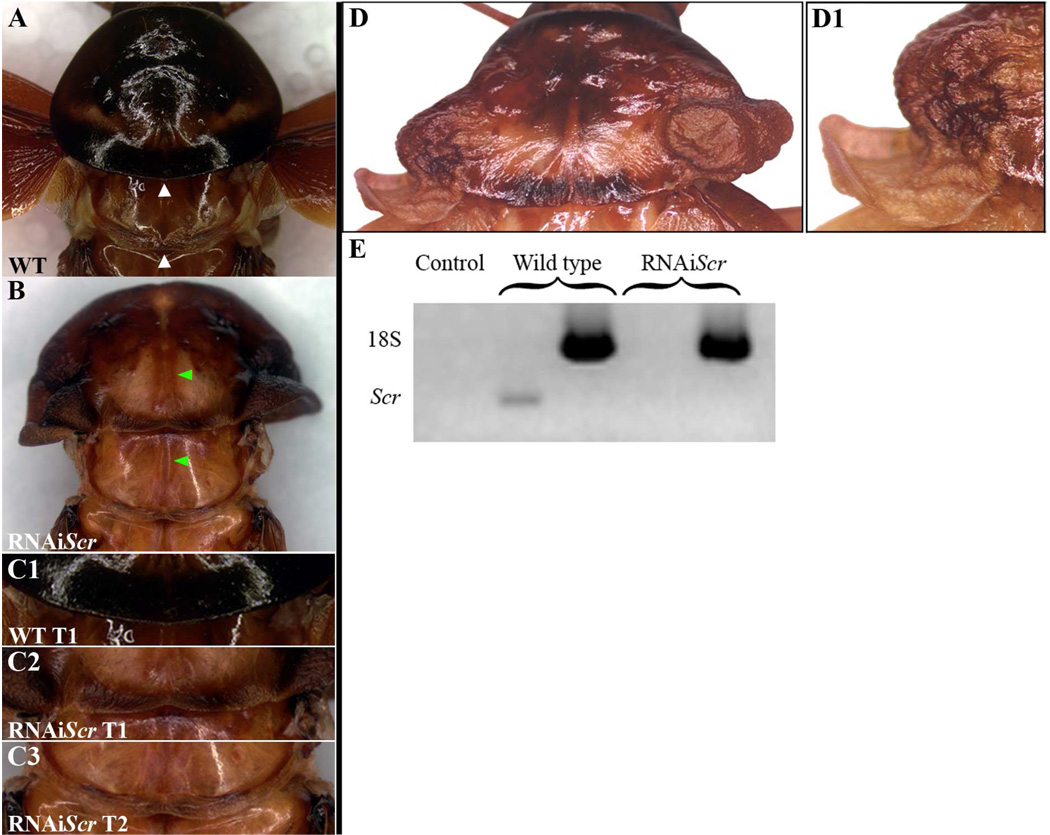Fig. 6.
Adult RNAiScr phenotypes of the prothoracic (T1) segment in Periplaneta americana. (A) Dorsal view of the prothoracic (T1) and mesothoracic (T2) segments of a wild type adult. The posterior margin of T1 has a rounded, smooth morphology while T2 exhibits a thickening of the cuticle that forms a ridge-like structure (white arrowheads). (B) Dorsal view of the prothoracic (T1) and mesothoracic (T2) segments of a RNAiScr adult. The posterior margin of T1 now exhibits a thickening of the cuticle and starts to assume a T2-like identity. In addition, an ectopic groove appears along the midline of the T1 segment that is normally only found on T2 (green arrowheads). (C1) Close up of the posterior portion of the T1 segment of the wild type adult shown in (A). (C2) Close up of the posterior portion of the T1 segment of the RNAiScr adult shown in (B). Note that the cuticle exhibits a thickening and appears like the ridge-like structure present on T2 (compare to (C3)). (C3) Close up of the posterior portion of the T2 segment of the RNAiScr adult shown in (B). This segment is unaffected and appears wild type (compare to (A)). (D) Strong RNAiScr adult phenotype. Ectopic wing-like tissue develops from the posterior lateral portion of T1. (D1) Close up view of the left ectopic wing-like tissue of the strong RNAiScr adult shown in (D). (E) RT-PCR analysis of Scr mRNA in the prothoacic plates of seventh nymphs. RNAiScr nymphs show a complete depletion of Scr mRNA in T1 as compared to wild type.

